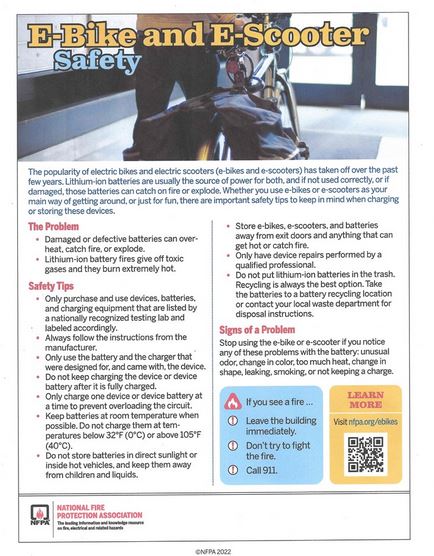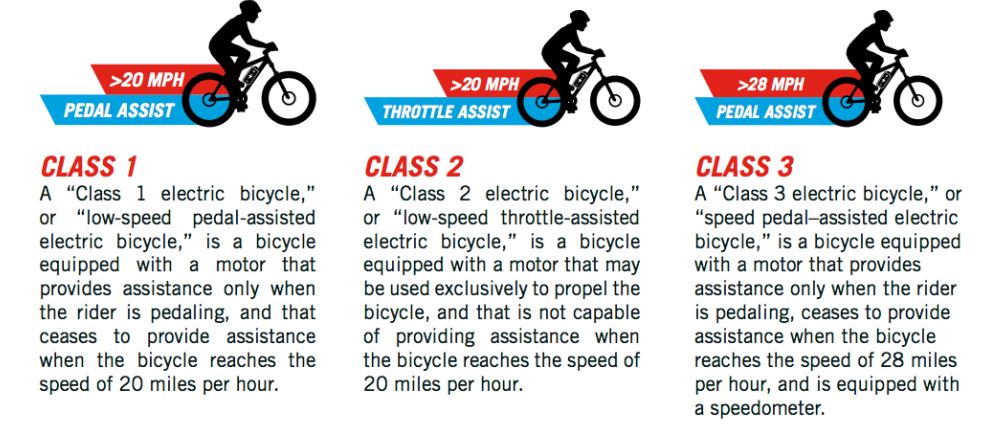eBikes and even eScooters have grown incredibly popular over the years – they’re great fun (particularly on hills)! However, riders should always remember that they are powered by strong batteries that could pose serious safety issues well worth attention.
Key safety tips listed in the flier below include this information:
**Damaged or defective batteries can overheat, catch fire or even explode
**Lithium-ion battery fires give off toxic gases and burn extremely hot
**Take good care storing eBikes and eScooters and their batteries…keep them away from exit doors and anything that can get hot or catch fire
Not to scare you! But to prepare you. 🙂

And below, as an FYI, are the three classes of electric bicycles – good to know!
